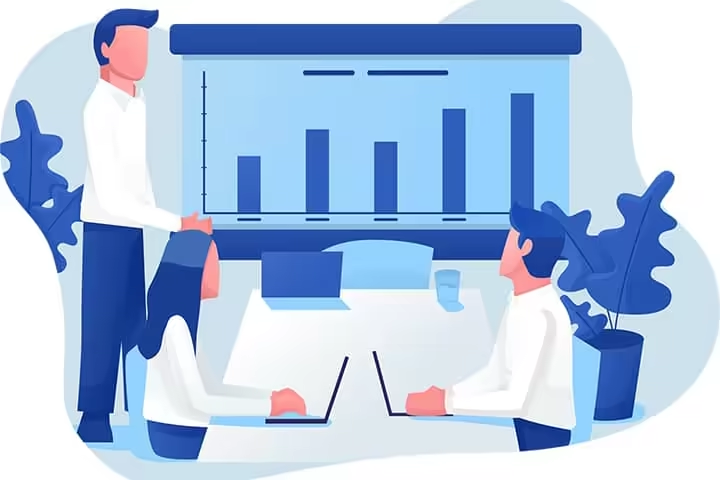In today's era, technology has completely transformed how we work, communicate, and acquire knowledge. As the demand for professionals continues to rise, companies are constantly seeking methods to evaluate and map the skills of their workforce.
This is where the remarkable capabilities of skills assessment software come into play. These software technologies let employers analyze skills and competency assessments so that they can hire the right candidate for the right position. Let’s take a look at skill mapping in further detail and discuss the approaches that bear the most advantages.
What is Skill Mapping?
Skill mapping entails a process that helps identify and analyze the competencies and abilities of individuals within an organization. It enables companies to understand their employee's strengths, weaknesses, and areas for growth. By mapping out these skills, organizations can ensure alignment between employees and job roles, pinpoint skill gaps effectively, and develop targeted training programs catered to individual needs.
The Conventional Approach to Skill Mapping
Historically, skill mapping has been a time-consuming and labor-intensive endeavor. It often involved assessments, surveys, and interviews to gather data on employee skills. Human resources departments would then consolidate this information into spreadsheets or databases – a format for analysis or effective utilization.
However, thanks to advancements in assessment software tools, skill mapping has become streamlined by offering efficiency, accuracy, and actionable insights.
The Importance of Assessment Software
Assessment software plays a role in automating the skill-mapping process for organizations. It allows them to efficiently collect, analyze, and report data on employee skills. The software eliminates the need for assessments and provides real-time insights into employee skills and competencies.
There are many advantages to leveraging the power of assessment software for skill mapping:
1. Simplified Data Collection:
The software simplifies collecting data on employee skills through quizzes, tests, and assessments. This eliminates tedious data entry tasks and ensures that organizations have accurate and up-to-date information.
2. Tailored Assessments:
Assessment software empowers organizations to create customized assessments that align with their requirements. These assessments can evaluate skills and soft skills like communication, leadership, and problem-solving abilities.
3. Real-time Reporting and Analysis:
With assessment software time reporting and analytics capabilities, organizations can gain insights into employee skills. They can generate reports and visualizations to identify skill gaps, track progress, and make data-based decisions.
4. Focused Development:
By leveraging the data collected from assessment software, organizations can pinpoint areas where employees require improvement. This enables them to design training and development programs tailored to their needs.
Overall, assessment software proves invaluable in streamlining skill mapping processes while providing organizations with information for workforce development.
Organizations must implement talent management and succession planning strategies to ensure that employees receive the resources and support to enhance their skills and remain competitive in their roles.
Useful Practices to Follow
Skill mapping, facilitated by assessment software, enables organizations to identify employees with potential and nurture their talents accordingly. This not only aids in succession planning but also helps identify individuals who possess the skills required for critical roles in the future.
To maximize the benefits of assessment software, organizations should adhere to the following practices:
1. Define Objectives:
Before implementing assessment software, it is important for organizations to establish objectives and determine what they aim to achieve through skill mapping. This ensures that the software is tailored to meet their requirements.
2. Engage Stakeholders:
Involving all stakeholders, including HR professionals, managers, and employees themselves, in the skill-mapping process is essential. Their input and feedback enhance the accuracy of assessments while fostering inclusivity throughout the skill-mapping journey.
3. Communicate Expectations:
Transparently communicating expectations regarding the skill mapping process and how collected data will be utilized is crucial for generating employee buy-in, alleviating concerns, and encouraging participation.
4. Training and Support:
Training and support are essential to ensure employees effectively utilize the assessment software. This will help them feel comfortable using the software and enable them to provide data.
5. Monitor and Update Employee Skills:
It is crucial for organizations to continuously monitor and update employee skills using the assessment software, as skill mapping is a continuous process. This proactive approach will allow organizations to avoid skill gaps and ensure employees are well-prepared for evolving job requirements.
Conclusion
In today's age, skill mapping has advanced with the help of assessment software. By harnessing this technology, organizations can streamline their skill-mapping process, gain real-time insights into employee skills, and make data-driven decisions. With tailored assessments, targeted training programs, and effective talent management initiatives, assessment software empowers organizations to cultivate a workforce thriving in the ever-changing digital landscape.



